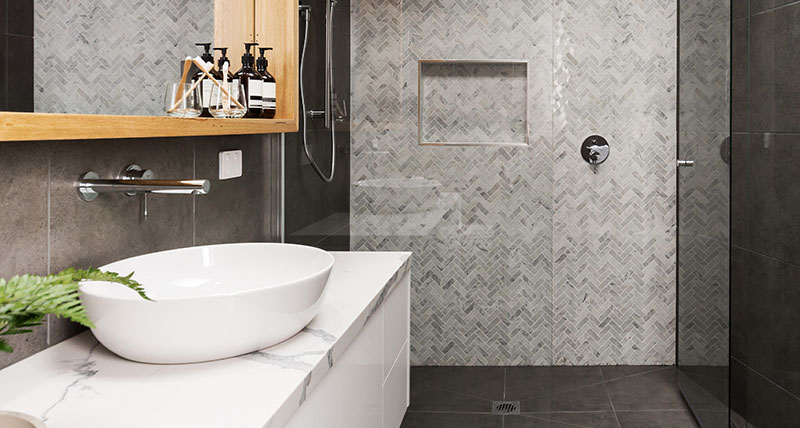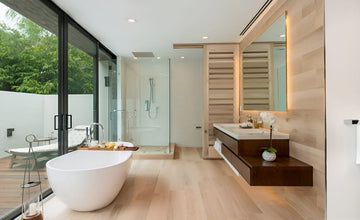In today's fast-paced world, the concept of the minimalist smart bathroom is not just a trend but a necessity. As technology continues to evolve, integrating smart solutions into our personal spaces has become more accessible and practical. A minimalist smart bathroom not only enhances the aesthetic appeal of your home but also improves functionality and sustainability. For those in the industry, particularly in Quality Assurance (QA), understanding how these technologies work and their benefits is crucial.

The Rise of Smart Bathrooms
The evolution of technology in home design has paved the way for smart bathrooms. These spaces are designed to provide maximum comfort and efficiency with minimalistic aesthetics. The idea is to create a serene retreat that combines modern technology with a clean, uncluttered design. A minimalist smart bathroom incorporates various smart devices and technologies, such as automated lighting, water-saving fixtures, and voice-activated controls.
According to a report by Decorilla, the trend of smart bathrooms is set to grow exponentially by 2025, with an increasing number of homeowners looking to integrate smart technology for convenience and energy efficiency. This shift is not only about luxury but also about creating an eco-friendly and technologically advanced living space.
Key Features of a Minimalist Smart Bathroom
Smart Lighting
One of the most significant features of a minimalist smart bathroom is smart lighting. With smart LED lights, you can adjust the brightness and color temperature to suit your mood or the time of day. Many systems allow you to control the lights via a smartphone app or voice commands, providing convenience and energy savings.
Water-Saving Fixtures
Water conservation is a critical aspect of a smart bathroom. Incorporating fixtures like low-flow toilets and faucets can significantly reduce water usage. Smart showers with digital controls offer precise temperature settings, ensuring you use only the water you need.
Voice-Activated Controls
Imagine adjusting the shower temperature or turning on the lights using just your voice. Voice-activated controls are becoming increasingly popular in smart bathrooms, allowing for hands-free operation and enhanced convenience. This technology is particularly beneficial for individuals with mobility challenges.
Automated Ventilation
Maintaining air quality is essential in a bathroom. Smart ventilation systems can detect humidity levels and automatically activate when needed, preventing mold and maintaining a fresh environment.
Benefits of a Minimalist Smart Bathroom
The benefits of a minimalist smart bathroom extend beyond aesthetics. These bathrooms offer enhanced comfort, energy efficiency, and improved hygiene. For industry professionals, understanding these benefits is crucial to delivering quality assurance in smart bathroom products and installations.
Moreover, the integration of smart technology can increase the value of your home. Potential buyers are often willing to pay a premium for homes equipped with advanced technology, making it a worthwhile investment.
Implementing Smart Technology in Your Bathroom
Transitioning to a smart bathroom doesn't have to be overwhelming. Start by identifying the areas where technology can add the most value, such as lighting and water fixtures. Consulting with experts in smart home technology can also provide insights into the best solutions for your specific needs.
For inspiration, you can explore various smart bathroom designs and ideas through resources like Duravit, which offers a range of innovative solutions for modern bathrooms.
Conclusion
The minimalist smart bathroom is more than just a trendit's a reflection of how technology can enhance our daily lives. By embracing these advancements, we can create spaces that are not only beautiful but also functional and sustainable. As the demand for smart technology continues to grow, staying informed and adapting to these changes is essential for those in the industry, particularly in Quality Assurance.

FAQs
1. What are the main components of a smart bathroom?
A smart bathroom typically includes smart lighting, water-saving fixtures, voice-activated controls, and automated ventilation systems.
2. How can smart technology improve bathroom hygiene?
Smart technology can improve hygiene through touchless fixtures and smart ventilation systems that help maintain air quality and reduce the risk of mold.
3. Is it expensive to convert a traditional bathroom into a smart bathroom?
While some initial costs are involved, the long-term savings in water and energy, along with the added home value, often justify the investment. Starting with a few key upgrades can make the transition more affordable.
For more insights into transforming your bathroom with smart technology, you can visit DripX for a comprehensive guide.






